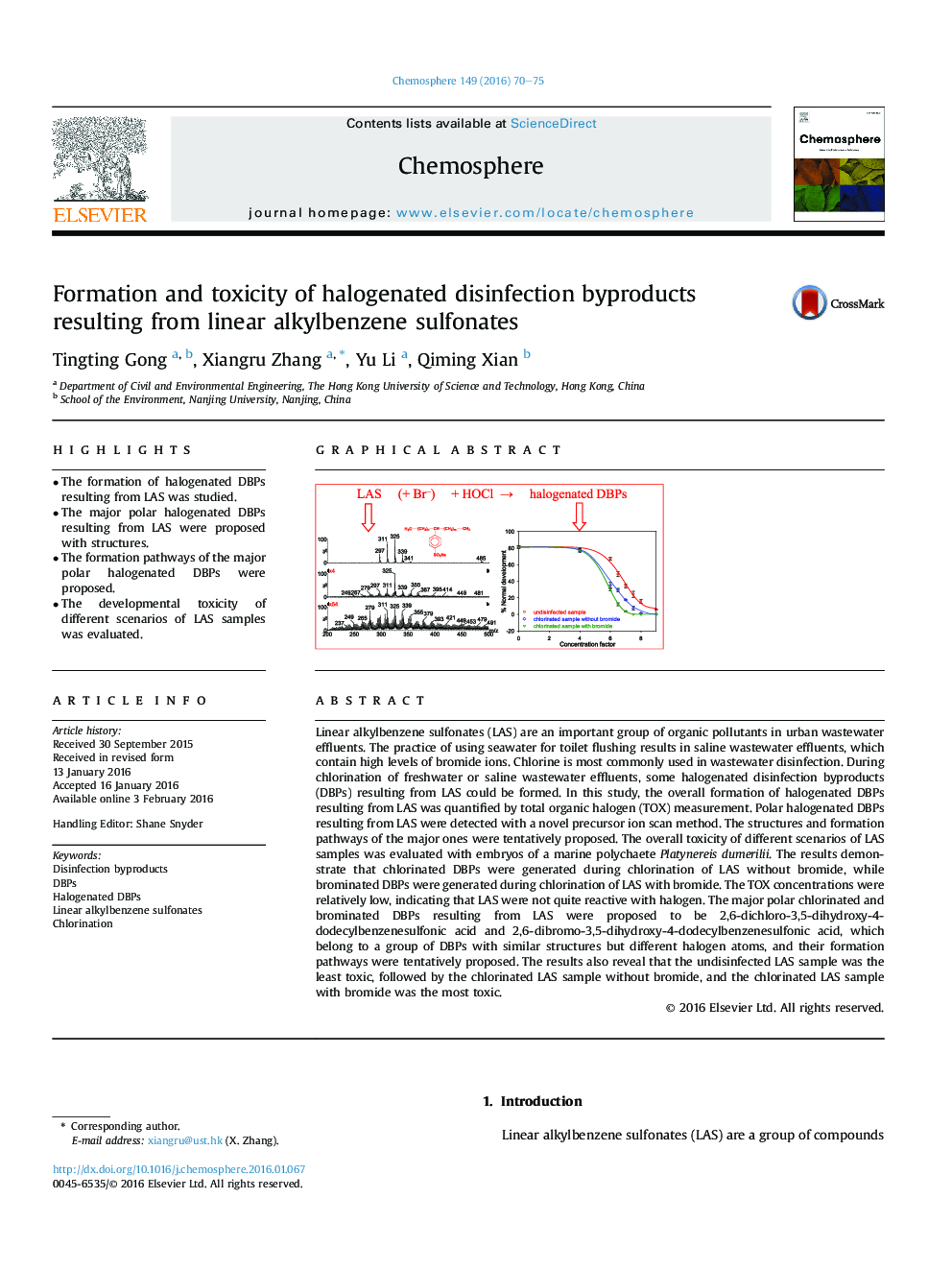| کد مقاله | کد نشریه | سال انتشار | مقاله انگلیسی | نسخه تمام متن |
|---|---|---|---|---|
| 4407911 | 1618822 | 2016 | 6 صفحه PDF | دانلود رایگان |
• The formation of halogenated DBPs resulting from LAS was studied.
• The major polar halogenated DBPs resulting from LAS were proposed with structures.
• The formation pathways of the major polar halogenated DBPs were proposed.
• The developmental toxicity of different scenarios of LAS samples was evaluated.
Linear alkylbenzene sulfonates (LAS) are an important group of organic pollutants in urban wastewater effluents. The practice of using seawater for toilet flushing results in saline wastewater effluents, which contain high levels of bromide ions. Chlorine is most commonly used in wastewater disinfection. During chlorination of freshwater or saline wastewater effluents, some halogenated disinfection byproducts (DBPs) resulting from LAS could be formed. In this study, the overall formation of halogenated DBPs resulting from LAS was quantified by total organic halogen (TOX) measurement. Polar halogenated DBPs resulting from LAS were detected with a novel precursor ion scan method. The structures and formation pathways of the major ones were tentatively proposed. The overall toxicity of different scenarios of LAS samples was evaluated with embryos of a marine polychaete Platynereis dumerilii. The results demonstrate that chlorinated DBPs were generated during chlorination of LAS without bromide, while brominated DBPs were generated during chlorination of LAS with bromide. The TOX concentrations were relatively low, indicating that LAS were not quite reactive with halogen. The major polar chlorinated and brominated DBPs resulting from LAS were proposed to be 2,6-dichloro-3,5-dihydroxy-4-dodecylbenzenesulfonic acid and 2,6-dibromo-3,5-dihydroxy-4-dodecylbenzenesulfonic acid, which belong to a group of DBPs with similar structures but different halogen atoms, and their formation pathways were tentatively proposed. The results also reveal that the undisinfected LAS sample was the least toxic, followed by the chlorinated LAS sample without bromide, and the chlorinated LAS sample with bromide was the most toxic.
Figure optionsDownload as PowerPoint slide
Journal: Chemosphere - Volume 149, April 2016, Pages 70–75
